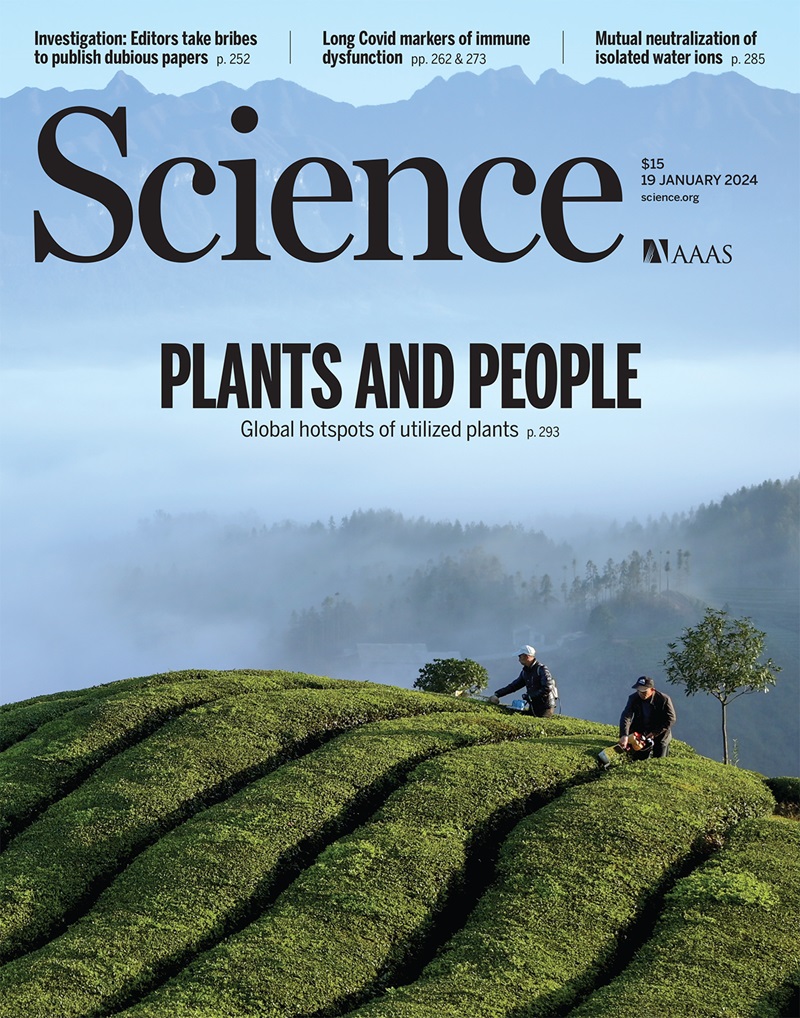Chromosome-specific centromeric patterns define the centeny map of the human genome
IF 44.7
1区 综合性期刊
Q1 MULTIDISCIPLINARY SCIENCES
引用次数: 0
Abstract
Centromeres are epigenetically specified by distinct chromatin, whereas their DNA varies between species and individuals. This extensive sequence divergence makes comparative analyses between centromeres challenging. In this study, we identified a chromosome-specific architectural pattern across the human genome, defined by the conserved spacing of a functionally relevant centromeric DNA motif. The distribution of these sites along chromosome arms constitutes the human “centeny map.” By using a custom Genomic Centromere Profiling (GCP) pipeline, we leveraged the motif’s position, orientation, and organization to construct structural models that enable reclassification of human chromosomal clusters, detection of centromere expansion, and identification of structural variants and misassembled regions. The high-resolution maps derived from this pattern not only provide a framework for comparative analysis of centromeres across evolution and disease but also offer a new dimension for chromosome annotation, assembly, and characterization.染色体特异性着丝粒模式定义了人类基因组的百年图谱
着丝粒在表观遗传上由不同的染色质指定,而它们的DNA在物种和个体之间是不同的。这种广泛的序列差异使着丝粒之间的比较分析具有挑战性。在这项研究中,我们确定了一个跨越人类基因组的染色体特异性结构模式,由一个功能相关的着丝粒DNA基序的保守间距定义。这些位点沿染色体臂的分布构成了人类的“百岁图谱”。通过使用定制的基因组着丝粒分析(GCP)管道,我们利用基序的位置、方向和组织来构建结构模型,从而实现人类染色体簇的重新分类、着丝粒扩展的检测以及结构变异和错误组装区域的鉴定。从这种模式衍生出的高分辨率图谱不仅为跨越进化和疾病的着丝粒比较分析提供了一个框架,而且为染色体注释、组装和表征提供了一个新的维度。
本文章由计算机程序翻译,如有差异,请以英文原文为准。
求助全文
约1分钟内获得全文
求助全文
来源期刊

Science
综合性期刊-综合性期刊
CiteScore
61.10
自引率
0.90%
发文量
0
审稿时长
2.1 months
期刊介绍:
Science is a leading outlet for scientific news, commentary, and cutting-edge research. Through its print and online incarnations, Science reaches an estimated worldwide readership of more than one million. Science’s authorship is global too, and its articles consistently rank among the world's most cited research.
Science serves as a forum for discussion of important issues related to the advancement of science by publishing material on which a consensus has been reached as well as including the presentation of minority or conflicting points of view. Accordingly, all articles published in Science—including editorials, news and comment, and book reviews—are signed and reflect the individual views of the authors and not official points of view adopted by AAAS or the institutions with which the authors are affiliated.
Science seeks to publish those papers that are most influential in their fields or across fields and that will significantly advance scientific understanding. Selected papers should present novel and broadly important data, syntheses, or concepts. They should merit recognition by the wider scientific community and general public provided by publication in Science, beyond that provided by specialty journals. Science welcomes submissions from all fields of science and from any source. The editors are committed to the prompt evaluation and publication of submitted papers while upholding high standards that support reproducibility of published research. Science is published weekly; selected papers are published online ahead of print.
 求助内容:
求助内容: 应助结果提醒方式:
应助结果提醒方式:


